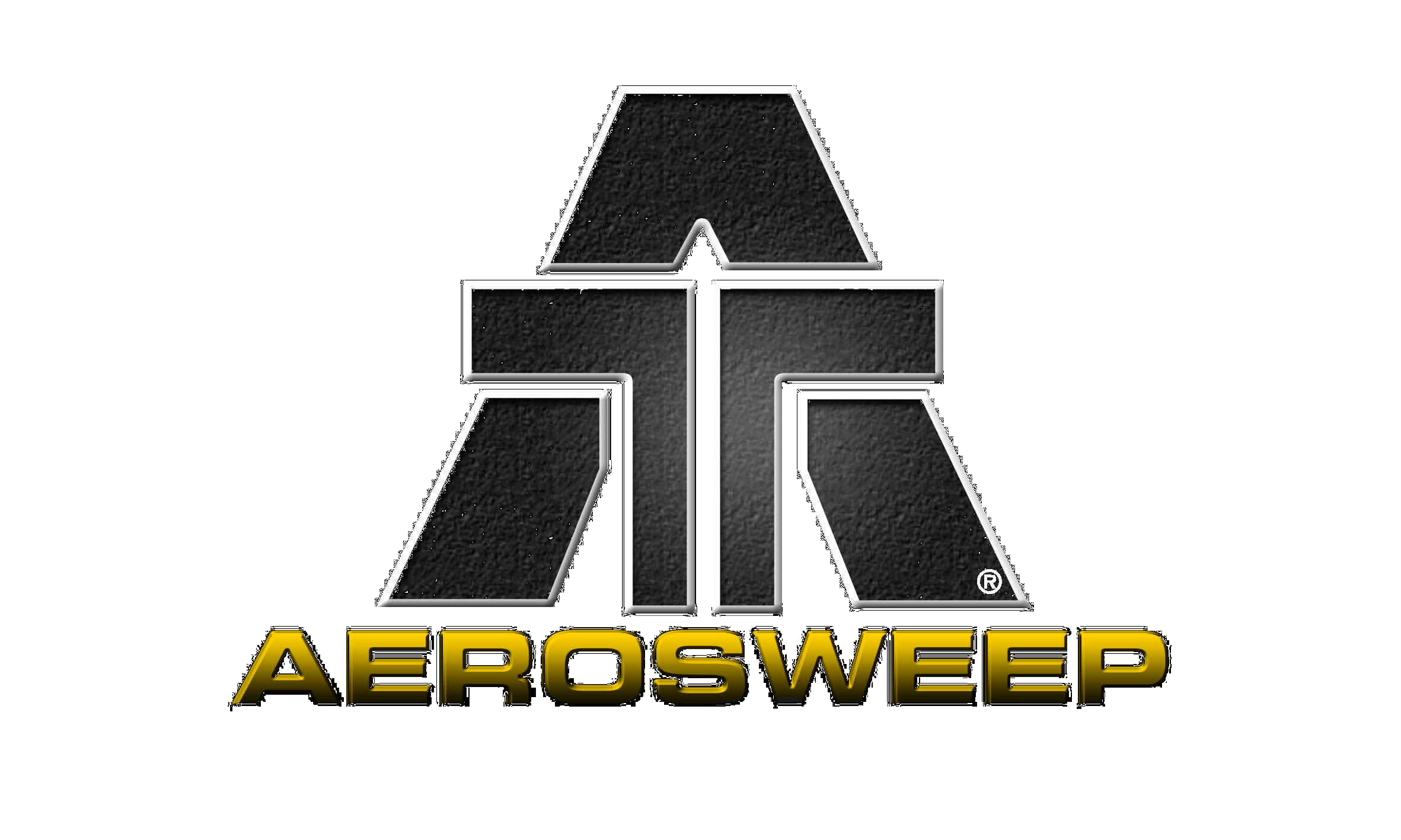Setting Up A FOD Control Program
No one doubts the importance of managing Foreign Object Debris, or FOD (pronounced “fod”), that can accumulate in workspaces in the aviation industry. FOD can be defined as any stray object on the runway, the taxiway, or the ramp area. Common varieties of FOD include loose nails, tools, rocks, metal shavings, flashlights, fragments from tires, ice, and even birds and other types of wildlife.
Keeping FOD away from the areas where aircraft operate is vital because these tiny objects can, and occasionally do, cause severe harm to equipment and even loss of life. FOD can get pulled into turbines, shred aircraft tires, or lead to other forms of equipment damage. The harm that results from these stray materials is referred to in the industry as Foreign Object Damage, which also has the initialism FOD. The Federal Aviation Administration (FAA) estimates that FOD incidents result in $4 billion of equipment damage every year.1
Despite the pressing need to manage FOD effectively, many facilities fail to implement the full range of measures required to eliminate the problem posed by foreign objects. It’s not a question of being unaware of the danger posed by FOD.
It is important to understand that protecting against FOD adequately calls for a multifaceted program that requires more than just making employees aware of the risk posed by stray objects. In addition, aviation facilities need to establish specific procedures and ensure they are properly followed. With that in mind, here is an overview of the various elements that should be included in a robust FOD control program.
Management Tools
Management should ensure that personnel are routinely reminded of the need to be vigilant about preventing the incidence of Foreign Object Damage (FOD). There are a variety of tools that can be implemented to foster a FOD-conscious workplace environment. Some of the more common ones include the following:
Statistical charts - Posting charts that visually depict trends in FOD incidents or audits—such as bar graphs—remind personnel of the need to stay aware of this threat. These charts should be placed in common workplace areas where they can be easily seen.

Performance reviews - Management should keep track of each employee’s record of adherence to FOD-related procedures, and this information should be shared with the worker as part of their scheduled performance review.
Report cards - Management should have scheduled inspections of every workplace area where FOD could possibly be found. These inspections should not only detect any and all FOD that is in the area at any given time but also any deficiencies in the environment that has the potential to spread foreign objects. All this information should be recorded in report cards for future reference.
Trend analysis - Are conditions getting better or worse over time? Are certain areas more prone to FOD incidents than others? Analyzing data over months and even years can detect chronic problems that might otherwise be dismissed as unconnected incidents.
Ideally, a FOD program should include all of the above features, plus any other comparable tools that permit management to track the efficacy of their safety efforts. Managers should carefully track FOD-containment trends and provide employees with as much feedback as is necessary to promote workplace safety. The aim of all this is to produce a workplace environment in which the risk posed by FOD is nonexistent.
It’s also important to understand that setting up a FOD prevention program isn’t a “one and done” process. You should expect to review your procedures on a regular basis and make upgrades when needed.
The Role of Safety Focals
To ensure that a FOD program is implemented and maintained properly, it is vital to designate one or more persons to act as supervisors. Individuals who act in this role are customarily known as “safety focals” (common alternative names include “safety focal points” and “safety focal persons”). These individuals are charged with the duty of developing and implementing FOD plans. They should have the authority to implement corrective actions and procedures whenever these are necessary.
The responsibilities of a focal point typically include the following:
- Reviewing the FOD program at regular intervals and making changes when needed.
- Ensuring that any corrective actions are implemented properly.
- Overseeing inspections of work areas where FOD could be found in order to confirm the efficacy of FOD containment procedures.
- Serving as a contact for employees who have questions regarding FOD or the company’s FOD program.
- Ensuring that all FOD incidents are investigated and logged according to company procedure.
- Ensuring that the cause of any FOD incident is analyzed to pinpoint weaknesses that led to the event and correcting safety deficiencies as needed.
- Keeping personnel updated on new developments in the FOD program.
- Assigning instructors to train personnel on current FOD prevention procedures and ensuring that the training is conducted according to company's regulations.
- Maintaining past and current records relating to the FOD program (e.g., audit reports).
The best practice is to arrange work schedules so that a safety focal is always available, any time of the day or night. In a 24/7 workplace, it’s not enough to have only one safety focal who is on a 9 a.m. to 6 p.m. schedule. That leaves evening and overnight shifts without the supervisory support that a safety focal can provide.
There should always be at least one person on duty who is a designated safety focal or empowered to carry out all the tasks that are allocated to this position.
FOD Awareness & Training

Making personnel aware of the threat posed by FOD is an ongoing process. FOD training should occur no less frequently than on an annual basis, and possibly on a semiannual or quarterly basis if this schedule is found to be more effective. It should also be part of every employee’s job orientation when they are hired.
FOD training programs should include everything an employee needs to know regarding the proper handling of any foreign objects they encounter and how to avoid introducing foreign objects into the workplace.
Topics covered in FOD training programs should include:
- What kinds of objects can be classified as FOD.
- The dangers of FOD.
- How to handle, store, and transport materials in a way that avoids introducing FOD into the workplace.
- How and when to perform housekeeping duties to clear the workplace of FOD.
- How to clean and inspect machinery to avoid introducing FOD into the workplace.
- How to control and store workplace tools.
- Designated dining areas (employees who consume food “on the run” or around aircraft can create a FOD risk).
- Dress code (jewelry and certain types of clothing can create a FOD risk—e.g., buttons falling off a jacket).
- Visitor policies (non-personnel in the workplace typically require an escort at all times).
- What constitutes a FOD incident.
- How to report a FOD incident.
A formal FOD report usually includes the following info:- Date of incident
- Type of FOD discovered
- Location where the FOD was discovered
- Name of person who discovered the FOD
In addition to scheduled training sessions, FOD awareness can be maintained through the use of posters and signs that remind personnel of their responsibility to manage objects properly.
Many aviation workplaces augment their training programs by teaching the importance of the “five S’s”:
-
Sorting - Employees should be able to identify what is necessary to have in a work environment and what is not necessary. Items that are not necessary should be removed from the area to avoid causing a FOD hazard.
-
Sweeping - Employees should be aware of proper cleaning techniques.
-
Standardizing - Employees should be given standard instructions to ensure consistency of application. Workers who deal with specialized equipment may be given modified instructions that consider their unique circumstances.
-
Simplifying - Directions should be kept as simple as possible.
-
Self-Discipline - Each employee is aware of their individual responsibility to manage FOD risk.
Training procedures should be reviewed periodically to ensure that workers have the knowledge and awareness necessary to prevent FOD-related incidents.
Containment Devices
When it comes to FOD, ordinary trash cans aren't adequate. Debris of this nature should be disposed of in heavy-duty FOD barrels. Each work area and gate should have at least one FOD barrel in an easily accessible location so workers do not have to walk a long distance to get rid of any object they may come upon.
According to Environmental Protection Agency (EPA) regulations, used oil cans must have a dedicated containment barrel; under no circumstances should they be mixed with other types of FOD. Barrels intended for oil cans should be clearly labeled as such to avoid confusion.
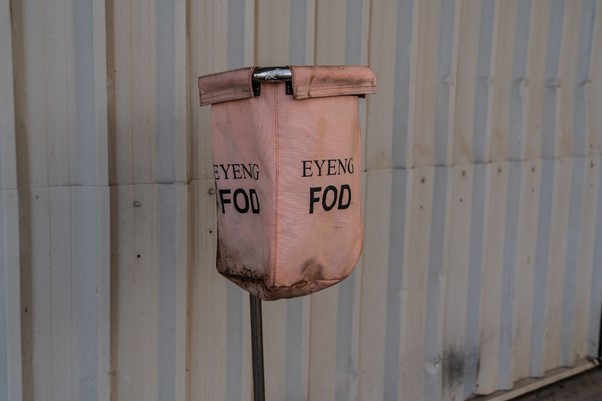
FOD container barrels should be lined with durable plastic bags that can be easily removed and replaced. It’s also recommended to use barrels with lids that can prevent weather-related issues such as rainwater filling up the container or heavy wind blowing away objects.
Proper Equipment & Tools
An essential part of any FOD program is providing personnel with the equipment needed to retrieve any stray object they may encounter. Not everything can be simply picked off the ground and tossed into the nearest trash receptacle. Personnel should have easy access to a wide range of FOD-retrieval equipment, including the following:
Push Brooms - These types of brooms typically have stiff bristles that are ideal for removing debris that is wet or heavy. Please be aware, however, that the FAA advises against using brooms with metal bristles or spines.2
Magnetic Bars - Magnetic bars are designed to be attached to either the front or back of airside vehicles , and are useful for picking up metal objects. They are generally hung from the vehicle, although there are some very large versions that must be towed. Generally, it is good practice to combine this with a friction sweeper system to ensure a systematic sweeping process, that doesn’t require a duplication of effort. If this is the approach taken, then a magnetic bar that can be hung from the front of the vehicle (such as that below) allows the friction sweeper to be towed by the same vehicle. A key point with magnetic bars is that their primary use is to pick up ferrous material that may be sitting inside AOA expansion joints or similar junctures, within airside surfaces. However, non-ferrous (non-magnetic) materials will not be picked-up, and since not all FOD can be picked up with a magnet, other systems and technologies will need to be used. Combing a magnetic bar with a friction sweeper may be a common-sense approach to FOD sweeping. Below is an example of one such system, were the FOD*BOSS Ultimate airfield sweeper has been attached to a towable magnetic bar system. A key benefit with this type of system is if anything picked up by the bar becomes dislodged, it will then be captured by the FOD*BOSS towed immediately behind it.
Borescopes - These tube-like devices come with a special lens or camera that allows the user to see into difficult-to-reach areas to detect the presence of stray objects.
Rumble Strips - As their name suggests, rumble strips are a relatively short length of raised sections within a strip of very hard plastic material. They are designed to “rumble” or vibrate any vehicle driving over them to dislodge any loose materials, dirt, stones, and tools etc., from the vehicle and its undercarriage. Thus, they prevent this material from becoming a problem deeper inside ‘airside territory’. Rumble strips, which are 10 ft to 15 ft (3 m to 4.5 m) long, can be moved around and are generally used at landside to airside transitions, or immediately adjacent to airside construction areas. Rumble strips are a good solution to prevent loose FOD from entering airside surfaces, but should always be used in conjunction with FOD sweeping systems.
The FOD*BOSS - Aerosweep's FOD*BOSS is the most effective airport sweeper in the world today. This revolutionary runway sweeper comes with several innovative features to ensure maximal effectiveness in the retrieval of FOD. These features include:
- Triple Elevator Steps
- Debris Retention Barrier
- GroundForce™ Tow Hitch
- FODStop™ Barrier System
- GPS Sweep Tracker
- Pintle Hook Adaptor
- Heavy Duty Mesh Cover
- Heavy Duty AeroBrush
Scheduling
Adhering to a "Clean As You Go" policy is a good way to keep FOD from accumulating. As the name suggests, this practice calls for personnel to clear away FOD as soon as possible, rather than only according to a predetermined time. When employees follow "Clean As You Go" procedures, they perform clean-up duties at their work areas whenever any of these conditions arise:
-
When there is a work stoppage
-
When their duties are completed for that shift
-
When they will be leaving the work area for at least 15 minutes
-
When they see debris that could disappear from view and become lost
-
When they see debris that can harm equipment
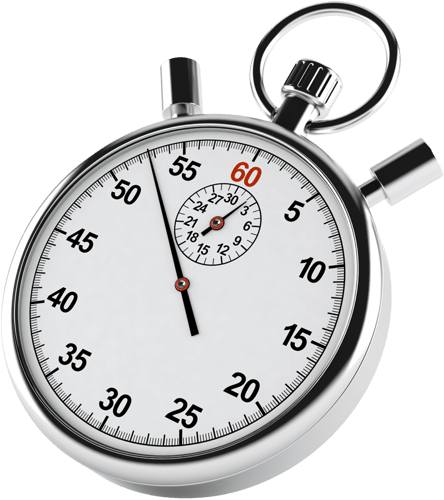
Although "Clean As You Go" procedures should be encouraged, these must be performed in addition to regularly scheduled sweeping of work areas where foreign objects can be found. Every employee must be made aware of this schedule and understand their role in clearing away their assigned area.
Here are a few tips for setting up a proper FOD schedule:
- Aircraft gates should be cleared of FOD before every arrival and departure there.
- This should ideally be done with a “FOD walk,” where a large number of people in a side-by-side formation move through the area and pick up any stray objects they find. In general, items collected during a FOD walk should not require an incident report.
- This should ideally be done with a “FOD walk,” where a large number of people in a side-by-side formation move through the area and pick up any stray objects they find. In general, items collected during a FOD walk should not require an incident report.
- Containers that hold FOD should be emptied out at least three times per week, or whenever they become full.
- FOD containers should never be permitted to become overfull, as objects inside can fall out.
Tool Inventory
FOD should not be thought of as just stray junk. Misplaced tools and accessories that are part of normal workplace operations—pliers, wrenches, wire cutters, etc.—can become dangerous FOD as well. For that reason, it is important to perform a tool inventory at the conclusion of each workday to ensure that all of these accessories have been accounted for.
If a tool becomes lost while a maintenance task is being performed, work activity should cease at once so a search can be initiated. The search should continue until the object has been found or it is certain that it is not in a sensitive area.
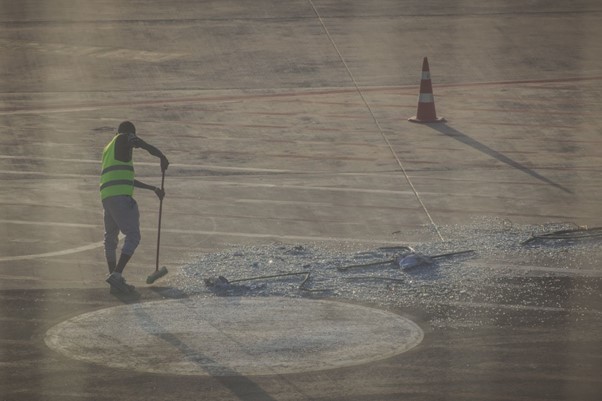
Lost tools should always be reported to the appropriate authority.
There are various ways to keep track of tools, such as:
Check-out sheets - This traditional tracking method simply lets a worker write their name, identify the tool they’re taking, and the exact time they’re removing the tool from storage. When they return the tool, they record it on the sheet as well. At the end of a shift, check-out information can be compared to check-in information to determine which tools haven’t been returned to their proper place.
Chit systems - This requires a worker to leave a personally identifiable token in place of a tool that they wish to borrow. The token bears the worker’s name or ID number.
Shadow boards - This is a board that includes visible outlines where each tool is supposed to be stored. If a tool is missing, there is an instantly identifiable space that indicates its absence. This makes it easy to find a tool and to see when a tool hasn’t been properly returned. Some varieties of shadow boards are made of foam, with precisely formed impressions for each tool.
Kitted hardware policy - An employee is provided only the tools needed for a particular task—no more and no less. There are no extra, unused tools whose disappearance may escape the worker’s notice.
RFID chips - Some facilities use radio frequency identification (RFID) chips attached to or embedded inside each tool to track its whereabouts. When these tools go missing, scanners can detect their current location.
Ideally, tools should be transported in a secure container such as a tote tray and kept inside it whenever they are not in active use.
It’s also a sound practice to perform periodic inspections of hand tools, which are prone to wear and deterioration that can lead to FOD. For instance, a small component could fall out of a damaged set of pilers. Tools that have become worn out should be replaced as soon as possible.
Rags that are exposed to oil, gasoline, or other combustible materials should also be as carefully tracked as hand tools. These types of materials are far from harmless. In fact, due to their flammability, chemical-tainted rags are an especially dangerous type of FOD. Used rags should never be left lying around. Personnel should always have ready access to containers where used rags can be deposited.
FOD Inspections
FOD needs to be eliminated wherever it can be found. Consequently, inspections must be routinely made in various areas of the facility. The most common sites for FOD inspections include:
Runways - These areas should be inspected at the beginning of each day to ensure that no FOD is present. This can be accomplished with a FOD walk.
Ramps - These areas should be inspected on a periodic basis for the presence of pavement deterioration, as loose asphalt or concrete can spread hazardous FOD around the area.
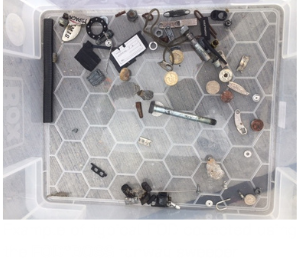
Cargo bins - They should be regularly cleaned out to prevent the accumulation of trash and other potentially hazardous debris.
Ground support equipment - Unneeded materials should be removed from GSE and properly stored away when they are not in active use. Power cords, hoses, and cones can create a serious FOD risk, so these objects should be placed safely away from aircraft pathways, and always put in storage when they are not in use. Other potential FOD associated with GSE includes but is not limited to marshalling wands, flashlights, and any loose debris.
FOD inspections should also eliminate any areas that can attract birds, as these seemingly harmless creatures cause over $900 million in damage to civil and military aircraft in the U.S. every year. Air collisions between birds and aircraft are extremely dangerous, and the majority of these incidents occur during takeoff and landing. Bird strike prevention is an essential part of your FOD program. Getting rid of perches, food sources, and similar attractants can go a long way toward reducing the likelihood of these incidents.3
Remember that the goal is always to eliminate completely any and all instances of FOD. One of the most effective tools in any anti-FOD arsenal is the FOD*BOSS from Aerosweep. This sweeping system can swiftly and effectively rid aircraft operating areas of FOD, without disrupting busy airfield schedules and processes. With a maximum forward operating speed of 40 mph (65 kph), the FOD*BOSS can sweep more than 8 million ft2 (759,200 m2) per hour.
